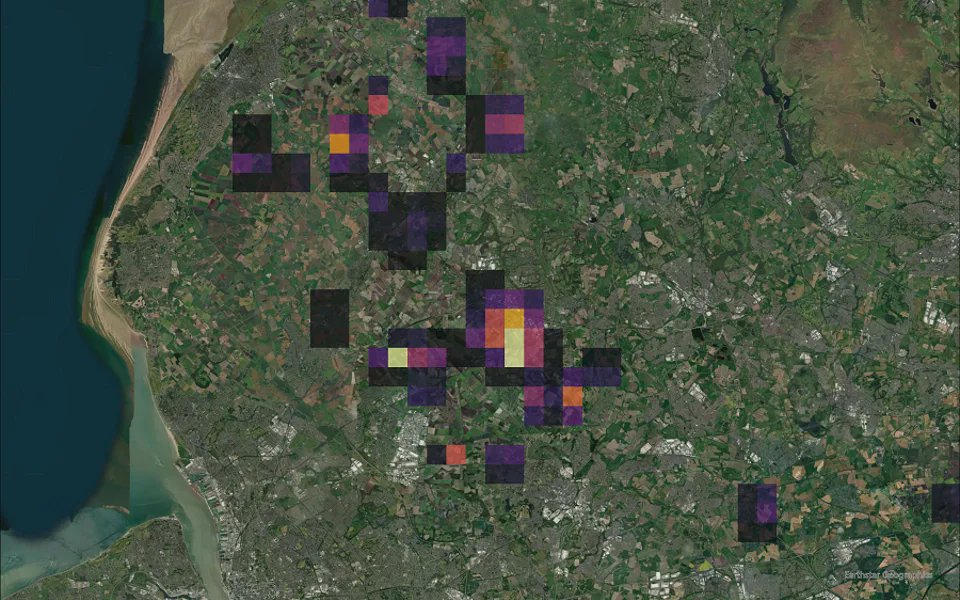I originally wrote the below article for Ricardo at https://www.ricardo.com/en/news-and-insights/insights/wildfires-in-the-uk-improving-spatial-distribution-observations

Addressing the ever-increasing threat of wildfires is of paramount importance for countries near the equator to the mid-latitudes. Wildfire occurrences are projected to increase in both intensity and frequency in the future as a result of shifts in global climate, land use and forest management. Even though wildfires are an integral part of the natural dynamics in several biomes (an area classified according to the indigenous species), they unfortunately impact many aspects of the structure, composition, and functioning of ecosystems. Not only this but the recent wildfires in Greece have caused extensive damage to residential properties and hotels, leading to a significant downturn in tourism – a critical pillar of Greece's economy and necessitating the largest evacuation effort ever undertaken in the country.
As fires are big emitters of NOX and PM (particulate matter) in the atmosphere, the effects on air quality are severe. Specifically, fine particulate emissions (PM2.5) from wildfires are linked to adverse health impacts (Cascio, 2018), with mortality rates increasing on fire days with poor air quality (Johnston et al., 2011; Morgan et al., 2010). It is well-documented that an increase of 10 μg/m3 in a two-day moving average of fine particulate matter is associated with an increase of 0.68% in daily all-cause mortality (Liu et al., 2019).
Mapping wildfires in the UK national emissions inventory
The UK has experienced an unprecedented number of large wildfires in recent years. Such fires events are expected to follow the global trend and be more frequent in the near future hence there is an urgent need to accurately map such occurrences at the correct locations, due to the large NOX and PM emissions in the atmosphere.
The UK National Atmospheric Emissions Inventory (NAEI) is compiled by Ricardo and is the main evidence base for both greenhouse gas and air quality pollutant emissions in the UK, and provides timeseries estimates of emissions to the atmosphere from UK sources at a high level of disaggregation. Ricardo’s geospatial team are responsible for mapping these emissions at 1x1km grid level and making them available to the public via the interactive NAEI website. For the latest inventory submission (NAEI 2021), published in July 2023, the team were able to improve the spatial distribution of emissions arising from wildfires.
Wildfires' improvement work
A recent improvement to mapping by the geospatial team, enables the location of fires in the UK to be better represented visually i.e. showing where they have taken place. This was done using the latest Earth Observation techniques as opposed to the latest approach of spreading fire emissions equally across forest and generic vegetation land cover. To achieve this involved Ricardo’s team liaising with remote sensing experts at CTrees (part of the Climate TRACE coalition) to provide data for 2015-2021 to update the spatial component of the NAEI 2021. (Nb: it is important to mention that previous data were not available as the contributing satellite missions had not been launched at the time.)
The objectives of this improvement comprised of obtaining the timeseries fire data (2015-2021) and converting them to NAEI-specific grids. Climate TRACE aims to release such datasets towards the end of each year, hence for NAEI 2021 Ricardo’s team used their latest data published in October 2022. The carbon emissions mapped by Climate TRACE were used to distribute the air quality pollutant emissions and the specific fire data sectors (types of biomass) that contributed to this update were wetlands, shrubgrass and forest. A visual representation of this improvement can be seen in the Figure 1.
A visual representation of this improvement can be seen in the Figure below which shows the vegetation and forest distribution in last year’s NAEI (using land cover data from 2007; left) and the updated fire emissions’ distribution (Climate TRACE’s data; right).
A visual representation of this improvement can be seen in the Figure below which shows the vegetation and forest distribution in last year’s NAEI (using land cover data from 2007; left) and the updated fire emissions’ distribution (Climate TRACE’s data; right).
Figure 1: Vegetation and forest distribution in last year’s NAEI (using land cover data from 2007; left) and the updated fire emissions’ distribution (Climate TRACE’s data; right).
Future research and development
The aforementioned improvement, proved to be a great update for the spatial allocation of fires in SNAP113 – the sector in the inventory that captures ‘Other natural emissions’. In parallel to the data provision from Climate TRACE Ricardo has developed a regional solution for the UK which provides enhanced accuracy when compared to global alternatives that rely on the standard approach to calculating spatial distributions. Through this work our Earth Observation specialists and geospatial data scientists have created a fully automated pipeline that produces an annual burnt area map of the UK, providing the Government with better insight into UK environmental challenges and a reliable evidence base to inform decision making. Figure 2 presents a visual overview of some of the steps for obtaining the locations of fires in the UK. While the primary focus was the Burnt Area Product (mapping of surfaces which have been sufficiently affected by fire to display significant changes in vegetation cover), our team has designed the pipeline to be flexible. As a result, we are continuing to develop its capabilities to monitor other 'spatial features' such as algal blooms, soil health and glacial changes.


Figure 2: Images showing a visual representation of the fire mapping pipeline

